© 2025 ALLCITY Network Inc.
All rights reserved.

The year 2021 won’t rank as one of the best in Coyotes history. Arizona missed the playoffs for the 14th time in the past 18 seasons (17 of them in Glendale), coach Rick Tocchet and the team parted ways, GM Bill Armstrong stripped the roster to its studs, the team got off to an 0-10-1 start in the 2021-22 season, and the City of Glendale served the franchise with a June 30, 2022 eviction notice from Gila River Arena, shedding light on more unpaid bills.
For a franchise made infamous for one-upping its own lows, this sure felt like rock bottom. At least that is the hope locally as the Coyotes turn the page to a new year.
There is renewed hope of a new arena in a more logical location. There is hope of a full-fledged rebuild instead of the partial measures that we have seen in the past. There is hope of landing the franchise center that has eluded this team for two decades. There is hope that the Coyotes will finally figure this thing out after a quarter century in the Valley that has been riddled with mind-numbing mistakes.
Here are 22 Coyotes storylines to watch in 2022.

1. In memory of Matt Shott
There won’t be a dry eye in the house when the Coyotes honor former senior director of hockey development Matt Shott with a celebration of life from 3 to 5 p.m. on Wednesday. Shott died on Dec. 19 from cancer.
The Coyotes will honor Shott with several video tributes and speakers including:
- Coyotes president and CEO Xavier Gutierrez
- Sean Whyte, a regional director for the league’s department of social impact, growth initiatives and legislative affairs
- Coyotes Chief Hockey Development Officer Shane Doan
- Coyotes Senior Director of Hockey Development and Business Strategy Lyndsey Fry
- Carly Accardo (mother of Leighton Accardo)
- Trevor Shott (Matt’s brother)
- Faith Dababneh, Ashlyn Campbell and Julia Slaney of the Arizona Kachinas
Guests attending Shott’s celebration of life may park in Lot G and enter Gila River Arena at Gate 4 beginning at 2:30 pm. Seating will be available throughout the lower bowl of the arena.
For those who would like to donate in Matt’s honor to the Matt Shott Memorial Hockey Development Fund, please visit ArizonaCoyotes.com/Shott. Funds will benefit the Coyotes’ youth hockey programs in Arizona.
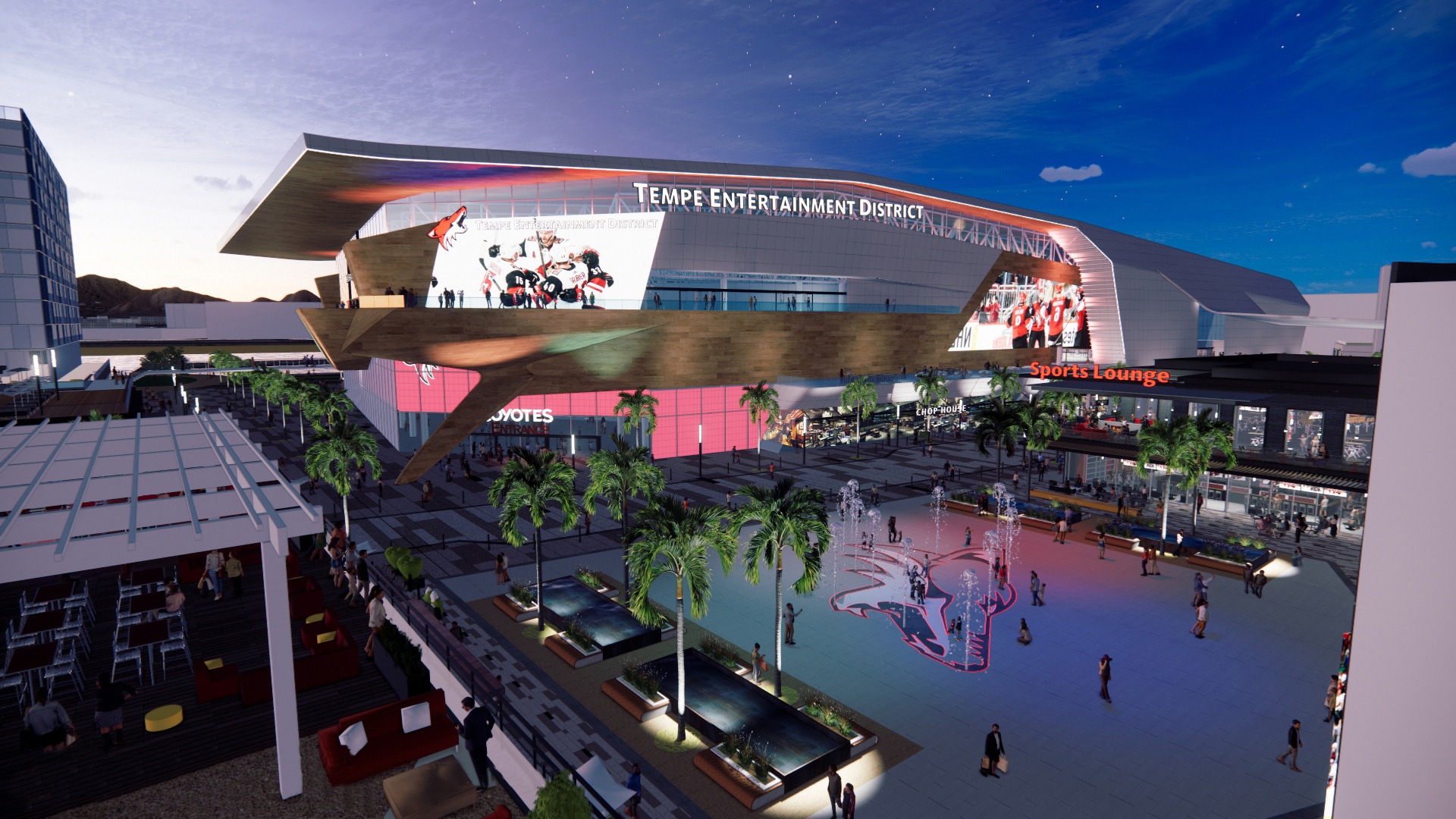
2. Tempe’s decision
I’ll have more on this soon, but the Tempe City Council is expected to make a decision on the Coyotes’ proposed arena/entertainment district within the first few months of the new year.
While the 2022 and 2023 drafts are the linchpins of the Coyotes’ on-ice future, the arena proposal is the linchpin of the Coyotes’ future in Arizona. If Tempe were to vote no on the proposal, the Coyotes would be back at square one with few options remaining to secure a new home. At that point, the doomsday scenarios of a franchise sale and/or relocation would gain steam.
If Tempe votes yes, there would be more hurdles to cross before the project reaches completion, most notable among those the actual financing, but at least there would be hope on the horizon.
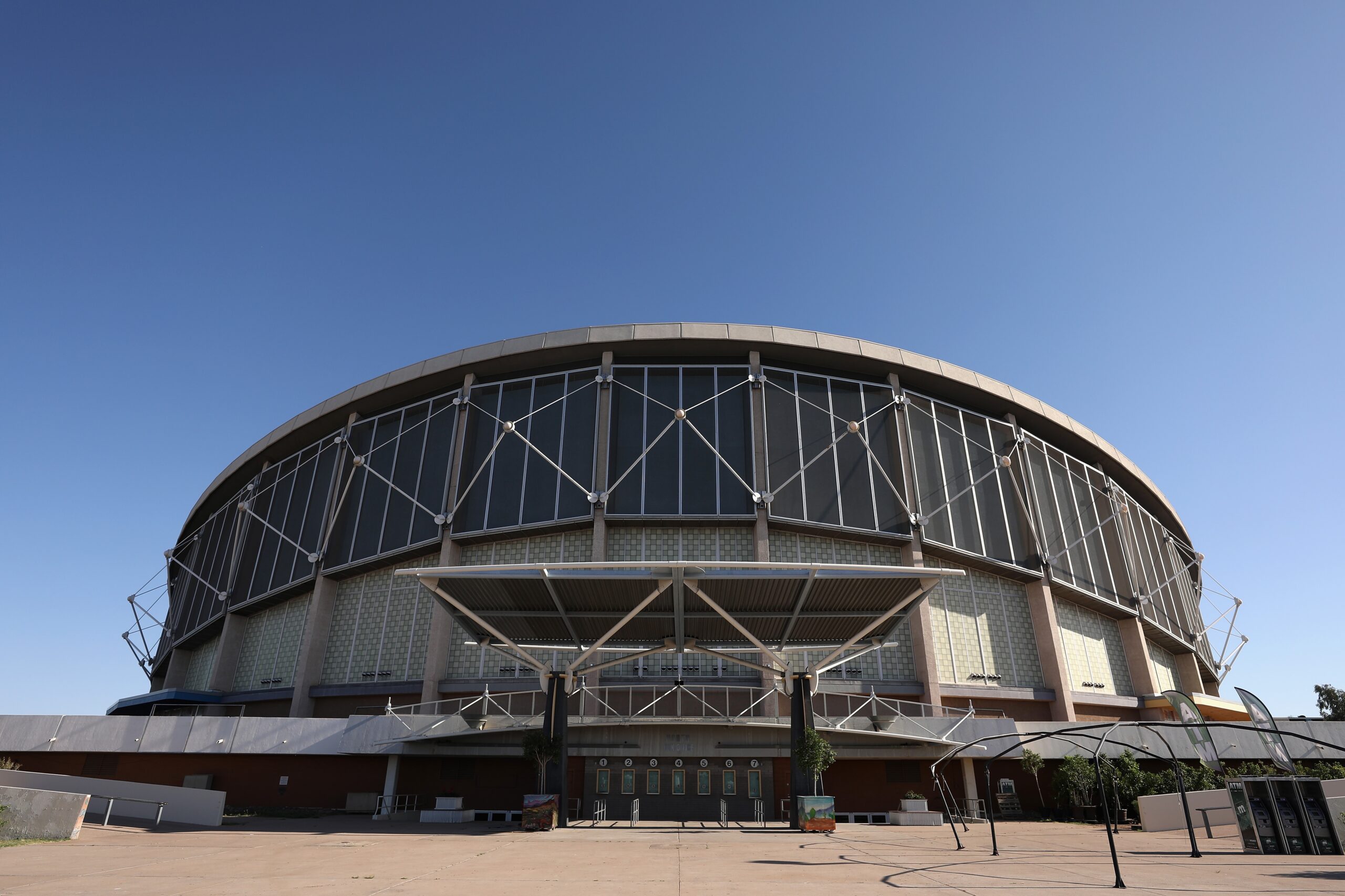
3. Interim arena solution
If the City of Glendale is resolved to kick the Coyotes out of Gila River Arena after the 2021-22 season — and all indications suggest that is still the plan — the Coyotes would need somewhere to play while land remediation and arena construction took place in Tempe.
I have laid out the interim possibilities in detail in a pair of stories published at PHNX Sports.
He is a detailed piece from our tour of Arizona Veterans Memorial Coliseum.
Here is a look at the other options.
Here’s another crazy rumor I have heard from a pair of of league sources: Having the Coyotes play in other NHL markets next season while they try to find a better interim arena solution which includes Chase Field (detailed in the second linked story above).
I have heard the idea floated of playing games in Las Vegas, Denver and even Quebec as an interim solution. Let me be the first to note what an awful decision this would be for the fanbase when state officials are willing to offer up the Coliseum as a temporary solution. Also, how would the NHLPA feel about such an arrangement that would keep players on the road longer and presumably keep them away from their families for longer periods of time?
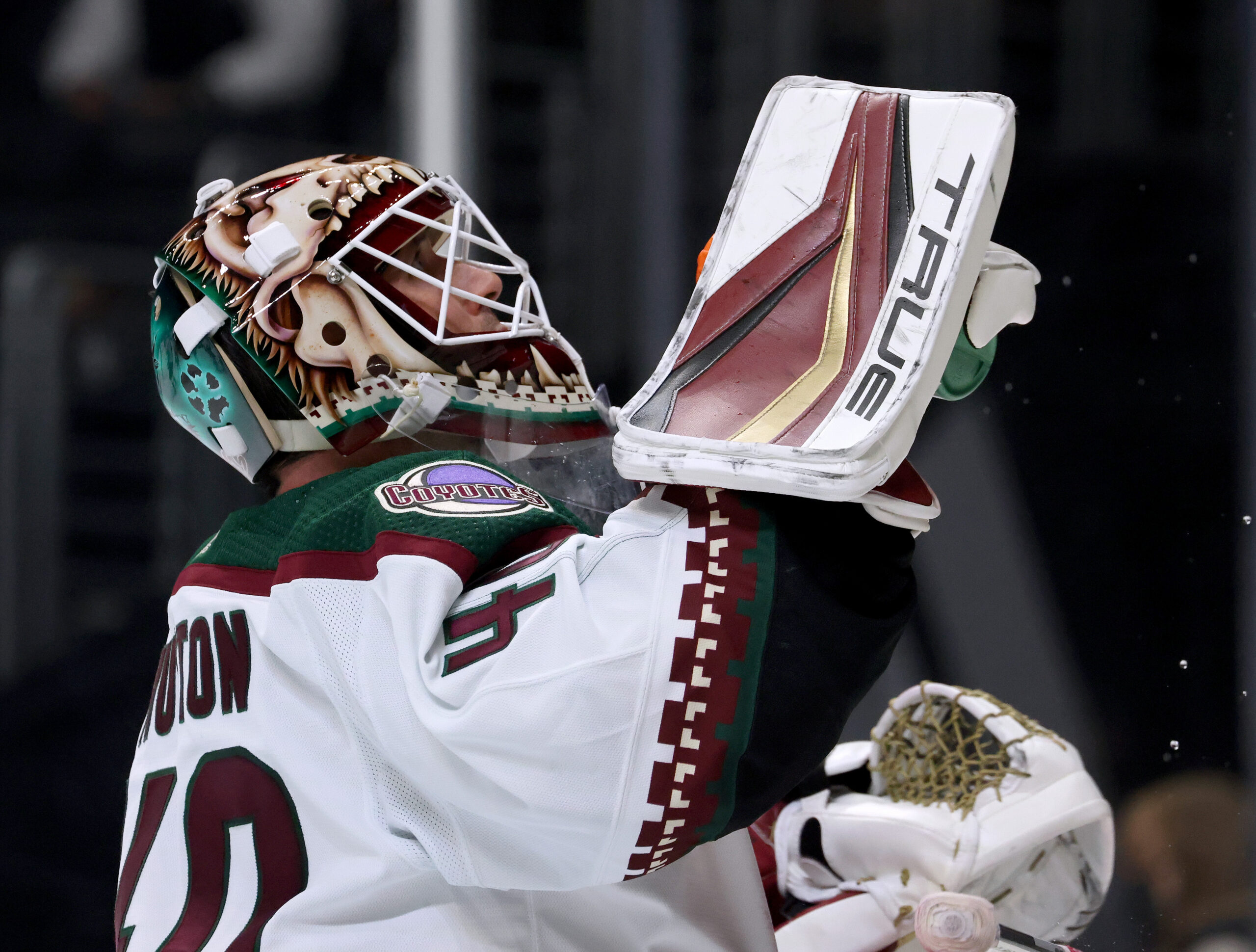
4. Carter Hutton’s future
The Coyotes are being tight-lipped with goalie Carter Hutton’s status as he attempts to return from a pair of lower-body injuries that have sidelined him since Oct. 25. All GM Bill Armstrong would say is that one injury has healed; the other has not.
“He’s in a battle right now to get that straightened out and see if he can make some progress with it,” Armstrong said.
Sources close to the situation say that injury is with his surgically reconstructed ankle, which does not appear to have fully healed. Some have even wondered if Hutton will play another game for the Coyotes before his contract expires after the season.
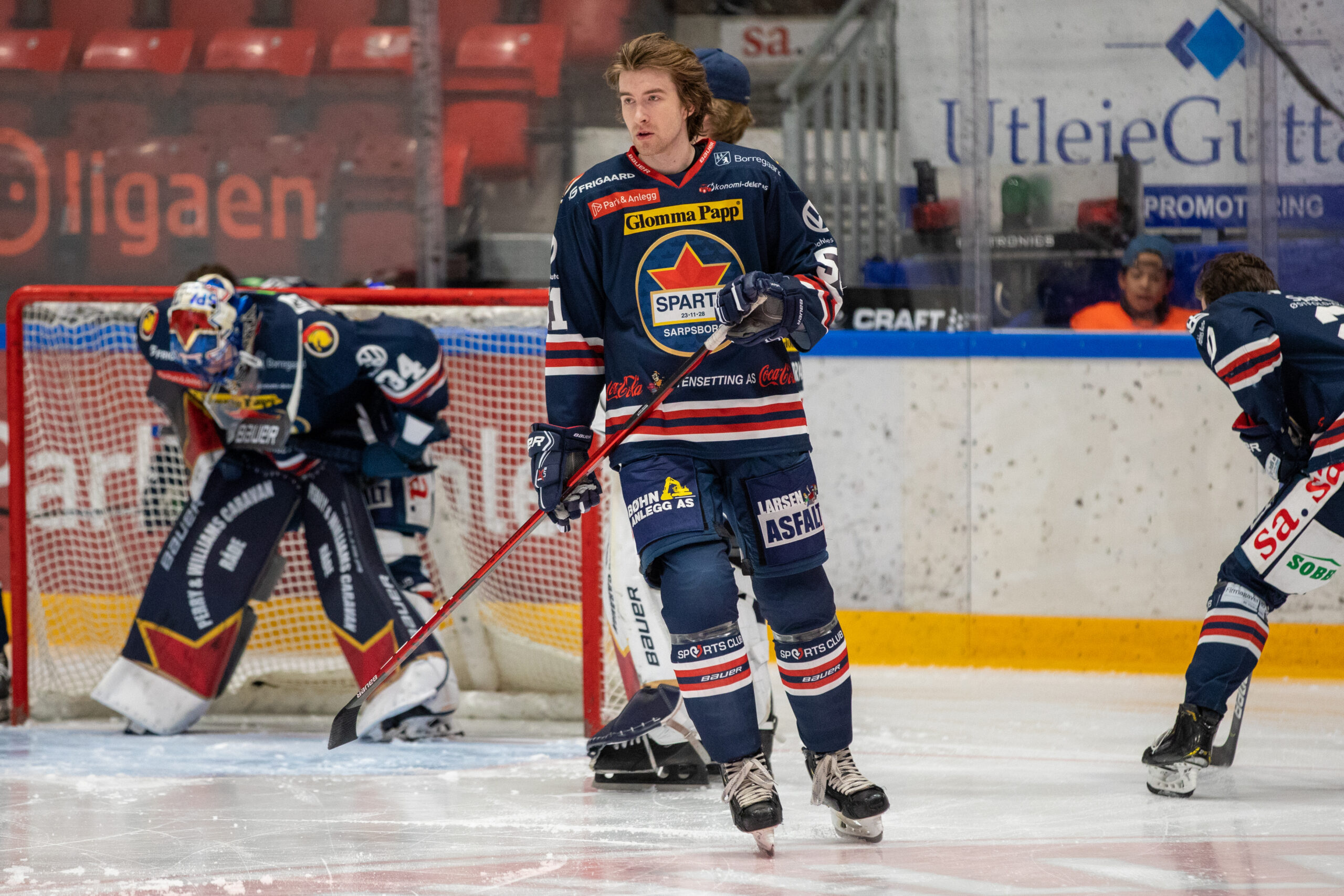
5. Taxi squad usage
These are currently in-place until the All-Star break, but that could change if COVID keeps whittling the rosters. Again, the rules stipulate that a maximum of six players can populate a taxi squad and no player can be on it more than 20 days. Players can’t be placed on it if they were on an NHL roster as of Dec. 22 (with the exception of emergency recalls); if they are waiver-exempt; if they were on the NHL roster for at least 75 percent of the regular-season days; or if they played in 16 of a team’s last 20 games through Dec. 22 (goalies who dressed but did not play count as having played).
The good thing for the Coyotes is that Tucson is only a two-hour drive from Glendale so taxi-squad players can shuttle back and forth and still play games as long as Tucson is at home. In the short term, this won’t have a great impact on the Roadrunners’ roster or these players’ development. If it stretches to the end of the season, that could change, but the Coyotes will be as prudent as possible with the type of player that they place on the taxi squad. With some exceptions, look for minor-league veteran types on this squad rather than key prospects in bad need of development time.

6. More postponed games
If you think we’ve seen the last of postponed games, think again. The Omicron variant isn’t slowing down. Until the NHL alters its approach to positive tests or this wave dies down, more games will be postponed.
Right now, there is a three-week break in February that was supposed to be used for the Olympics but will now be used for make-up games. That open period may not suffice to squeeze in all of the postponed games, meaning the end of the regular season could be pushed back, and with it the NHL Scouting Combine, the NHL Draft Lottery, the NHL Draft and the start of free agency. Oy.

7. All-Star break
The Coyotes probably won’t have more than one representative at the NHL All-Star Game this year, although they could have players participate in the skills competition. It’s really a two-horse race for a spot on the Central Division team at this point. As of Thursday morning, defenseman Shayne Gostisbehere was tied for 14th among NHL defensemen in points with 20, and was tied for fourth among Central Division defensemen. Clayton Keller leads the team with 23 points, but he is not among the top 60 points producers in the NHL and he was tied for 21st among Central Division forwards.

8. Phil Kessel’s streak
Depending on make-up games, Phil Kessel (930 games) will pass all-time consecutive games played leader Doug Jarvis (964) some time in late March or early April. Former Coyote Keith Yandle (953) will pass that mark much sooner, unless the Philadelphia Flyers defenseman misses a game due to injury or for another reason. Either way, Kessel could move into the top two on a very impressive list, provided he can stay in the lineup for the next few months.
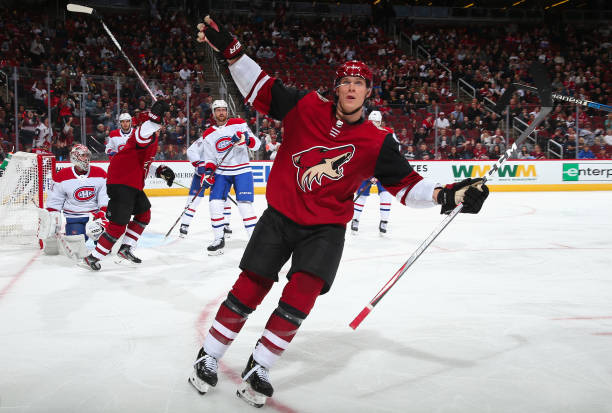
9. Trade deadline
The NHL trade deadline is March 21. As it stands, the Coyotes would have 20 games remaining in their season when that deadline passes. That could change based on the alarming rate of postponed games due to COVID.
There really isn’t an untouchable player on the NHL roster, although I’d be surprised to see Barrett Hayton moved, and I don’t think Shayne Gostisbehere will be on the block this season. If you’re considering other players that would be valuable to playoff teams, here are some names to consider:
Phil Kessel: Kessel has wanted out since the start of the season when it became clear that the Coyotes were in full-on rebuild mode. That’s understandable at his age. Kessel wants to play for a contender. Unfortunately for Kessel, the Coyotes didn’t receive any credible offers for his services. That will likely change at the deadline when teams look to add scoring depth (and power-play help) for the playoff run. Kessel carries a significant cap hit, but he would only be due a prorated amount of his $1 million remaining salary ($5 million was already paid via signing bonus).
Jakob Chychrun: Clearly, a 23-year-old defenseman on a team-friendly contract who had 18 goals last season would be attractive to other teams. As I wrote previously, however, the asking price would be astronomical.
When the Coyotes embarked upon a full-fledged rebuild in the offseason, Chychrun was thought to be one of a handful of players whose future in Arizona seemed secure. As the reality of this rebuild played out on the ice, however, I started to wonder if any of the players from the middle core (Chychrun, Clayton Keller, Nick Schmaltz, Lawson Crouse, Christian Fischer) would be here when the Coyotes came out the other side of it.
It’s hard to endure this for any player, but for those veterans who were acquired on one- or two-year deals, they are nearing the end of their run anyway. For the younger players, the simple opportunity of being in the NHL can counterbalance that suffering. For the middle core of players, they are essentially forfeiting two to three seasons of their prime without hope of playoff contention. That can wear on players’ psyches and impact their game. You can already argue that the lack of talent around him, and being thrust into the No. 1 defenseman role at age 23 with no legitimate top-pairing partner has already impacted Chychrun’s game.
I have been approached by multiple sources who told me they had heard that the Chychruns and Jakob’s agent, Andrew Scott, have requested a trade. If you know the family, you’d find that rumor difficult to believe. That said, Armstrong might be doing Chychrun and those other middle-core players a favor by moving them to another team where they have a better chance at success in the next few seasons. I have to believe that Chychrun would be open to this idea because he wants to win.
If Armstrong does move Chychrun – and again, he is not actively shopping him – the return would have to be huge, and it would have to include more than draft picks.
Johan Larsson: Larsson will be an unrestricted free agent after this season. He carries a cap hit of $1.4 million ($1.8 million salary). He has an edge to his game (thus the name Angry Larry), he is a strong matchup center, he has eight assists this season (no goals), and he can be a strong faceoff man, although his percentage is down this season, partially due to overuse on the Coyotes’ thin center depth chart. The return on Larsson would not be great, but it would likely be enough to entice Armstrong for a player who likely isn’t coming back next season.
Lawson Crouse: No Coyotes fan wants to see an emerging, 24-year-old power forward on a cost-controlled contract on the trade block, but there will be a great deal of interest in Crouse for all of the aforementioned reasons. He has eight goals and 15 points in 29 games, and he skates well for a big man. Then again, the Coyotes will need some players under contract next season. As a restricted free agent, Crouse will not break the bank.
Christian Fischer: Like Crouse, Fischer will also be a restricted free agent after this season, making him an attractive bottom-six option for some teams because of his ability to play strong defense, kill penalties and bring energy to an entire room. The return on Fischer wouldn’t be as high, so a deal might not make sense unless a team is willing to overpay.
Travis Boyd: When I spoke to folks in Toronto after the Coyotes signed Boyd to a one-year deal, they told me he was just a guy; a player who would be in and out of the lineup with a ceiling as a fourth-line center. Opportunity has given Boyd the chance to prove his doubters wrong. He has a career-high seven goals and 13 points in 22 games, putting him on pace for a career season. Lots of teams need center depth. Boyd, whose contract expires after this season, could fill a depth need.
Antoine Roussel: Roussel won’t bring a big return but he will be an unrestricted free agent who could bring grit and savvy in a depth position to a playoff team.
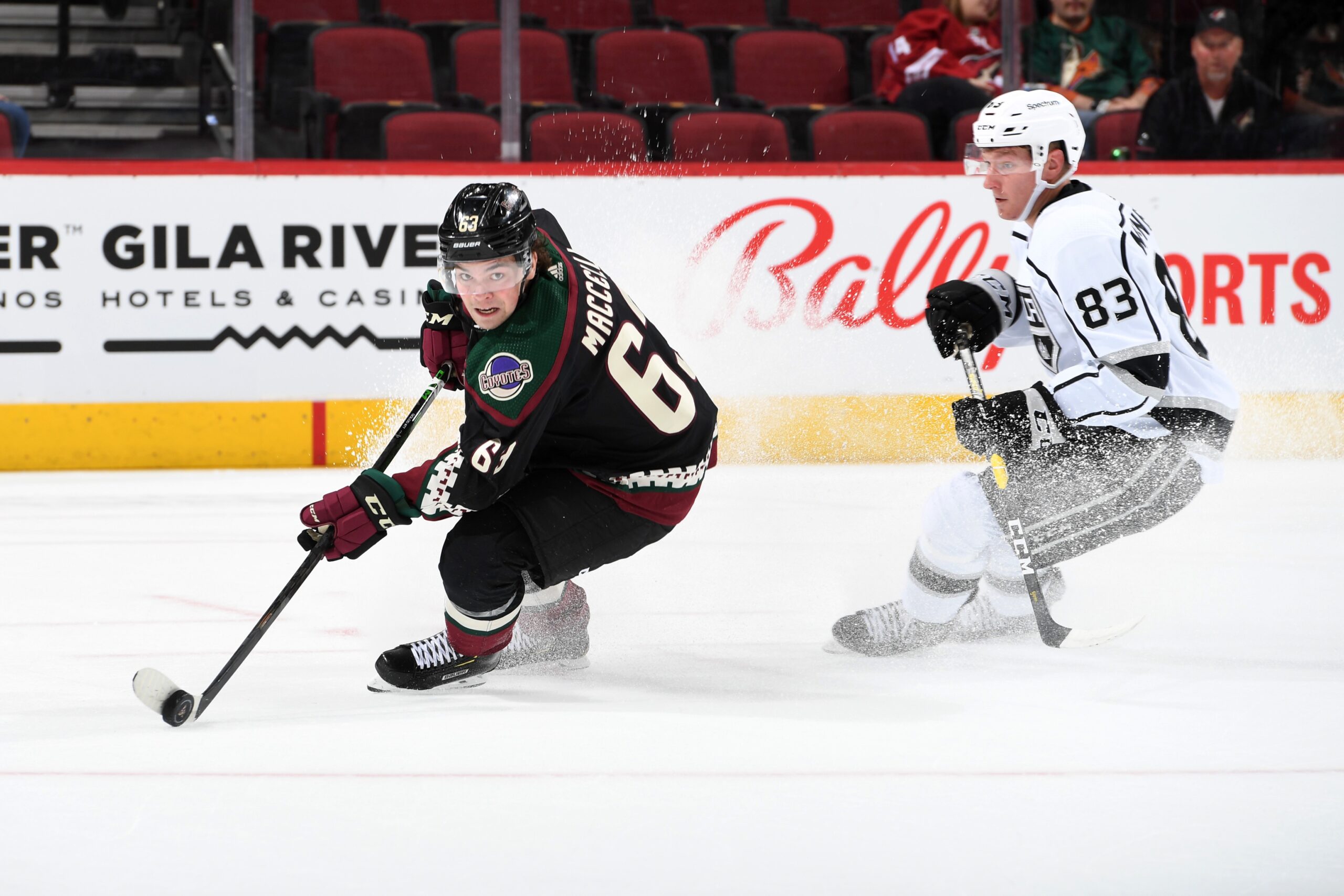
10. Tucson call-ups
I won’t even speculate on who might be called up from Tucson at this point. Five Roadrunners (Cam Dineen, Ben McCartney, Dysin Mayo, Janis Moser, Michael Carcone) and six Coyotes overall (Karel Vejmelka) have already made their NHL debuts this season (three short of tying the franchise record). Matias Maccelli could become No. 7 next week.
NHL teams are permitted to expand their rosters after the trade deadline (March 21) so other players will likely get a look.
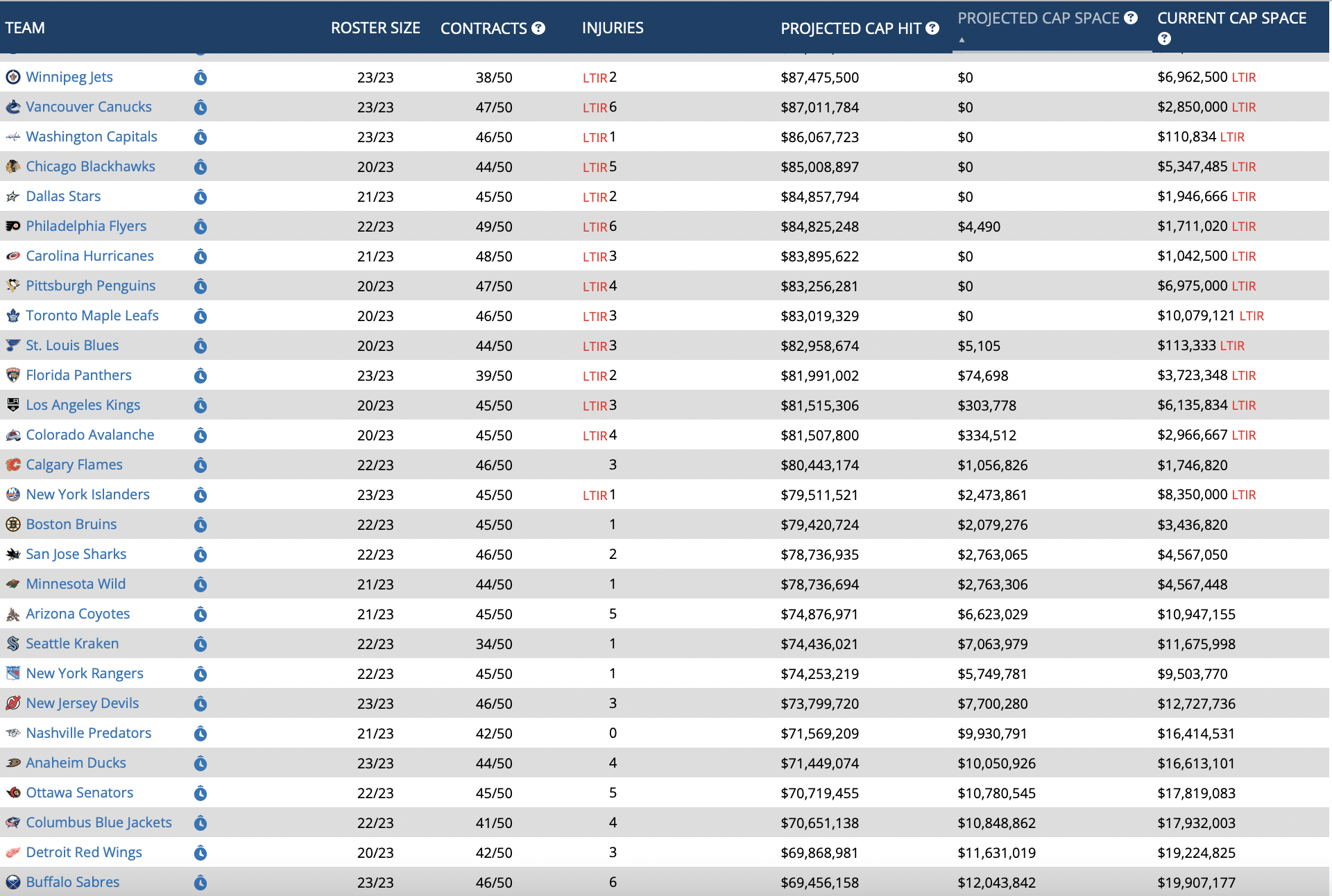
11. Salary cap
NHL commissioner Gary Bettman said earlier this month that the salary would rise by $1 million to $82.5 million next season. The announcement came as Bettman announced that leagues revenue was expected to top $5 billion this season.
At that point, only five games had been postponed due to COVID. As of Thursday morning, 81 games had been postponed, the Canadiens, Senators and Maple Leafs had reduced capacity crowds to 50 percent and the Omicron variant was creating record numbers of cases across North America.
So if this current trend continues, will the NHL still be so bullish on its future? And if it is forced to re-evaluate a cap increase, could that once again benefit the Coyotes as cap-strapped teams look to move big contracts to create roster flexibility? The Coyotes only have 20 contracts on the books between the NHL and AHL for next season, per Cap Friendly. If Armstrong has his way, the offseason and 2022-23 season will look a lot like this season as he stockpiles picks and assets for the future. Time will tell if luck is once again on the GM’s side.

12. Standings watch
Coyotes fans are taking an unusual interest in other teams’ performances this season. That’s because those performances are directly tied to Arizona’s draft picks.
If Montreal can go on a second half surge with Carey Price in net, the Coyotes could land a first-round pick in the No. 11-No. 15 range. If Montreal can’t get its act together one season after a Cup Final berth, the Coyotes won’t get that top-10 protected pick. They’ll get Carolina’s pick instead, so the lower the Hurricanes finish in the standings, and the earlier they exit the playoffs, the better for the Coyotes. The same goes for Colorado and the top-10 protected pick that the Coyotes acquired in the Darcy Kuemper trade.
In the second round, those picks that the Coyotes acquired from the Islanders (Andrew Ladd deal), Flyers (Shayne Gostisbehere), Canucks (Oliver Ekman-Larsson, Conor Garland) and Sharks (Adin Hill) are all trending in a positive direction. All four of those teams currently sit in the bottom half of the NHL standings.
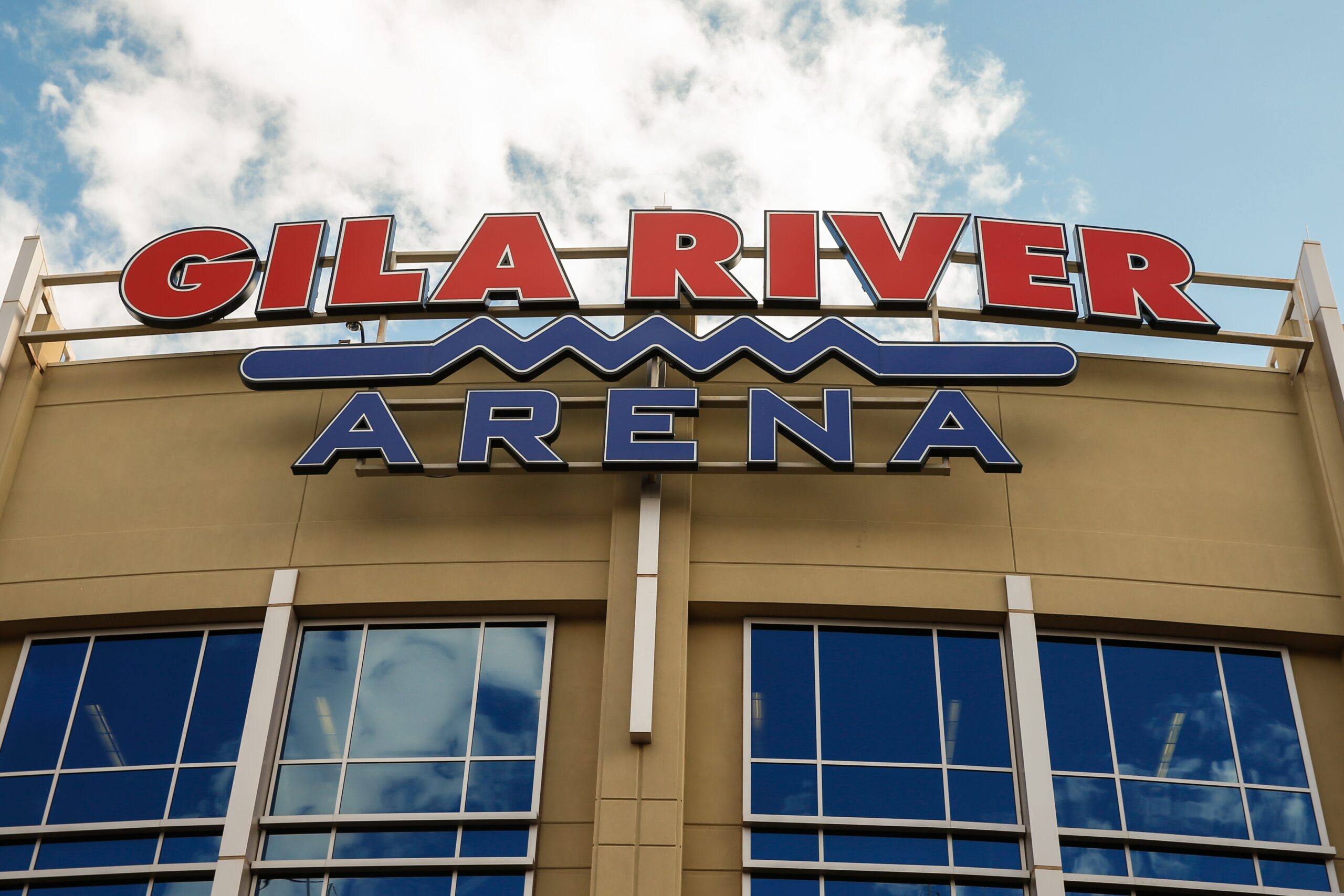
13. Gila River Arena send-off
The Coyotes’ first game at Gila River Arena was a 3-1 loss to the Nashville Predators on Dec. 27, 2003. As of now, Arizona’s final game at Gila River Arena is also scheduled to come against the Predators on April 29, 2022.
The Coyotes have been playing home games at Gila River Arena for 18 years, but the City of Glendale recently informed the team that this season would be its last in the building as the city looks to move forward (for better or for worse) with its post-Coyotes plan.
If this is the last hurrah in Glendale, there won’t be a lot of great memories to share, but the 2012 playoff run that included a playoff victory over those Predators would be one of the highlights. Brian Boucher’s shutout streak, Shane Doan’s last-second hat trick and an assortment of other achievements could fill one heart-warming video tribute to the otherwise ill-fated Glendale years.
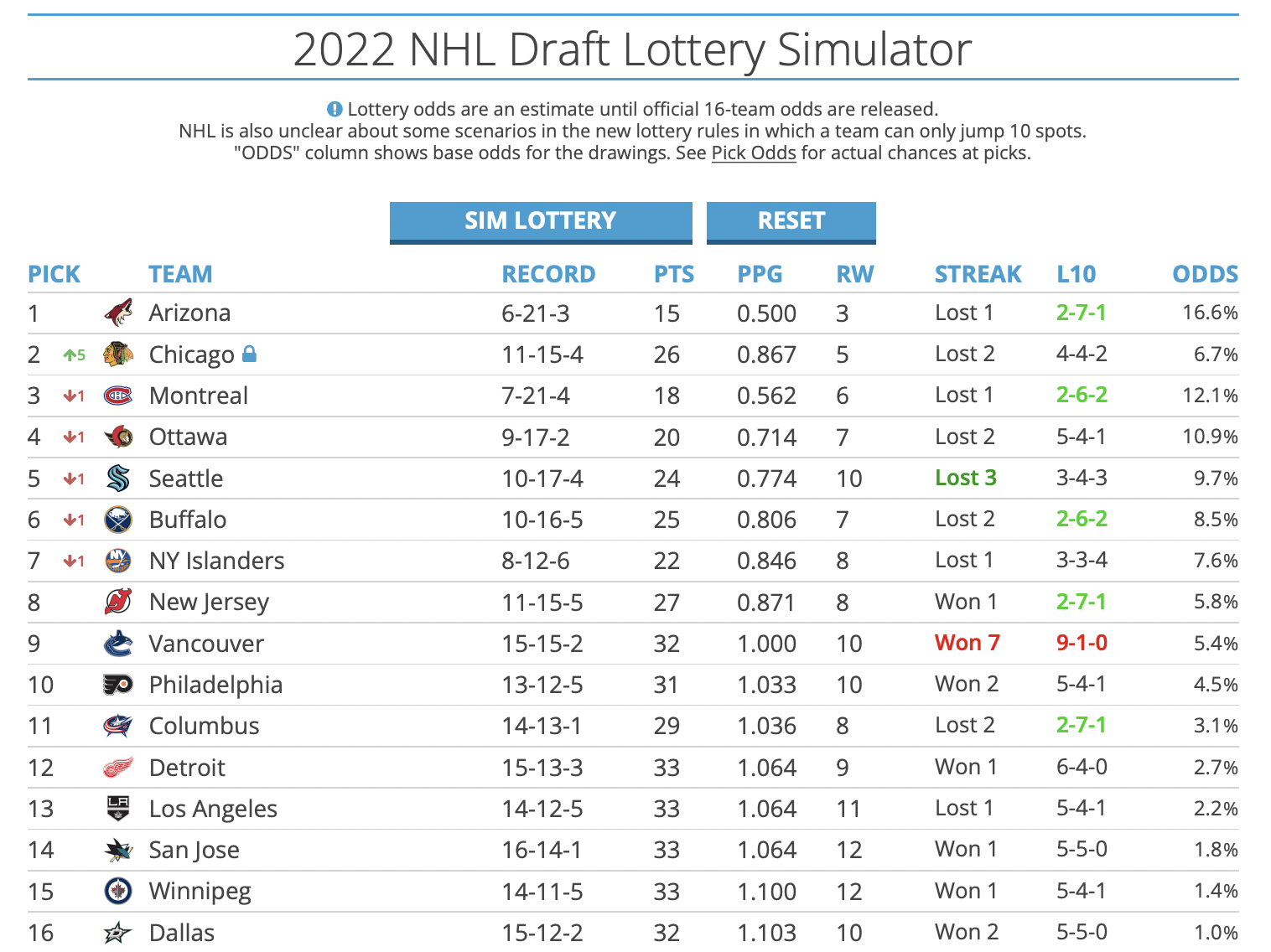
14. NHL Draft Lottery
Let’s be clear on something. The 2022 NHL Draft Lottery will not make or break the Coyotes’ future. The NHL Draft is educated guesswork because the league continues to select 17- and 18-year-old kids who have not fully developed physically or mentally, rather than raising the draft age like the NBA and NFL, and thereby increasing the potential for return on investment.
That said, if the Coyotes do land a top-two pick for the first time in franchise history, it would help because there is the greatest chance of success among those top two picks. And if the Coyotes land the No. 1 overall pick they will take Kingston Frontenacs center Shane Wright.
You are going to hear speculation between now and the draft that another player could supplant Wright as the top pick. This happens every year. I’m not sure if it’s because draft analysts get bored with the same narrative, or if they actually convince themselves of their flawed thinking. Nonetheless, Wright is the guy in this draft and I suspect that he will go No.1 no matter who is picking. Big centers with skill are at a premium and Wright has those tools, regardless of his unknown ceiling.
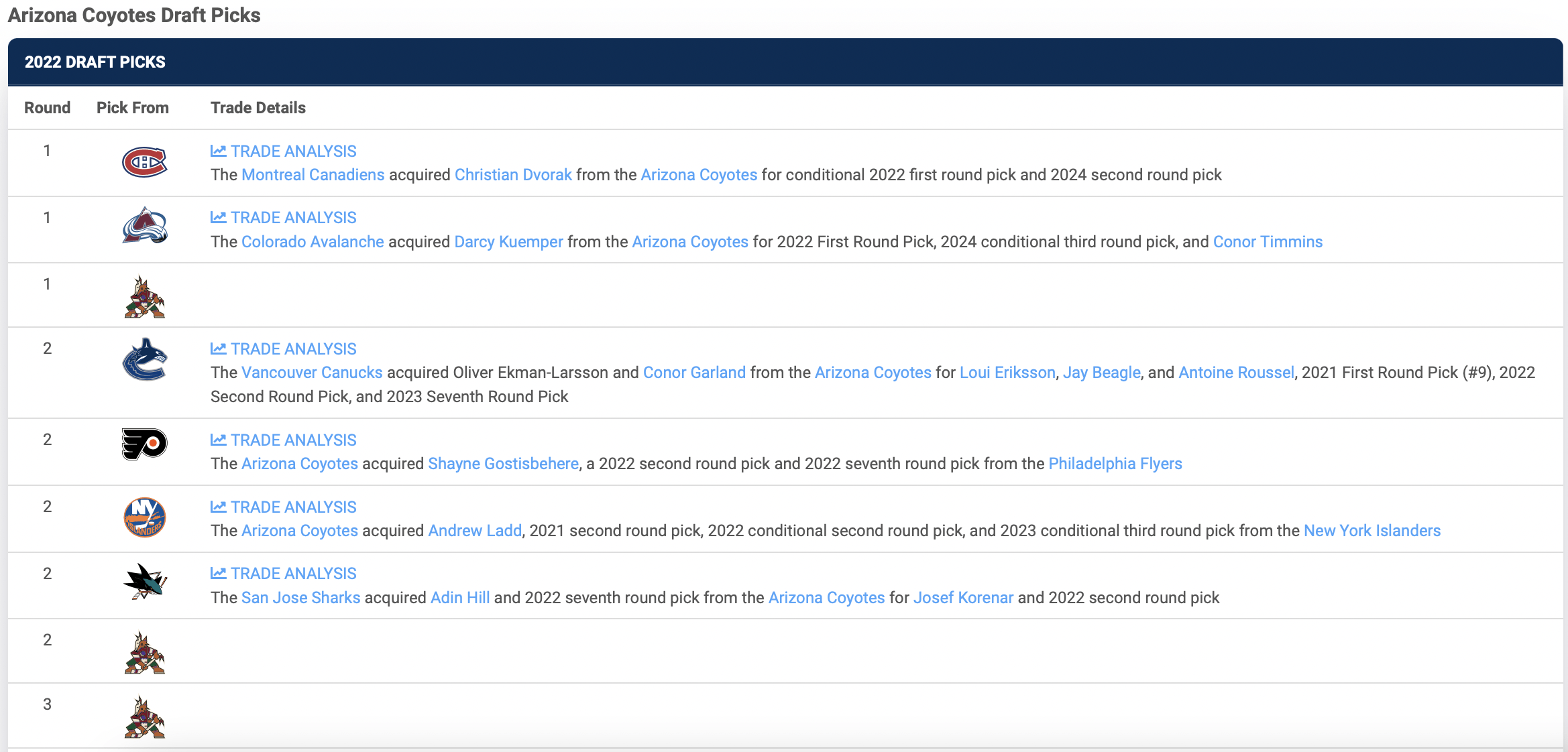
15. NHL Draft
No event elicits more excitement from the Coyotes fan base. That’s because the 2022 NHL Draft will be a significant building block in the team’s future.
By now, everybody knows that the Coyotes own three picks in the first round, eight picks in the first two rounds and nine in the first three rounds, where the vast majority of NHL players are found. That means that the Coyotes are likely to take nine players among the league’s top 69 picks, a staggering 13 percent of the draft class to that point. If the Coyotes do make all of their eight picks in the first two rounds (or add more) they would set an NHL record for most picks in the draft’s first two rounds.
Remember when analysts were calling this one of the best three drafts of the millennium? They have since backed off that stance based on the recent performance of players in this class. Which is true? The truth is that nobody knows, not even those draft analysts. COVID has had a major impact on players’ development but it is too early to say whether that impact is permanent or just temporary. There was a reason this class was so highly touted at one point, but as we noted above, prospect projection is a highly inexact science in the NHL due to the young draft age and the assortment of human variables at play. Nobody really knows what this draft class will bring, but the Coyotes have dramatically improved their odds of success through sheer volume of picks.
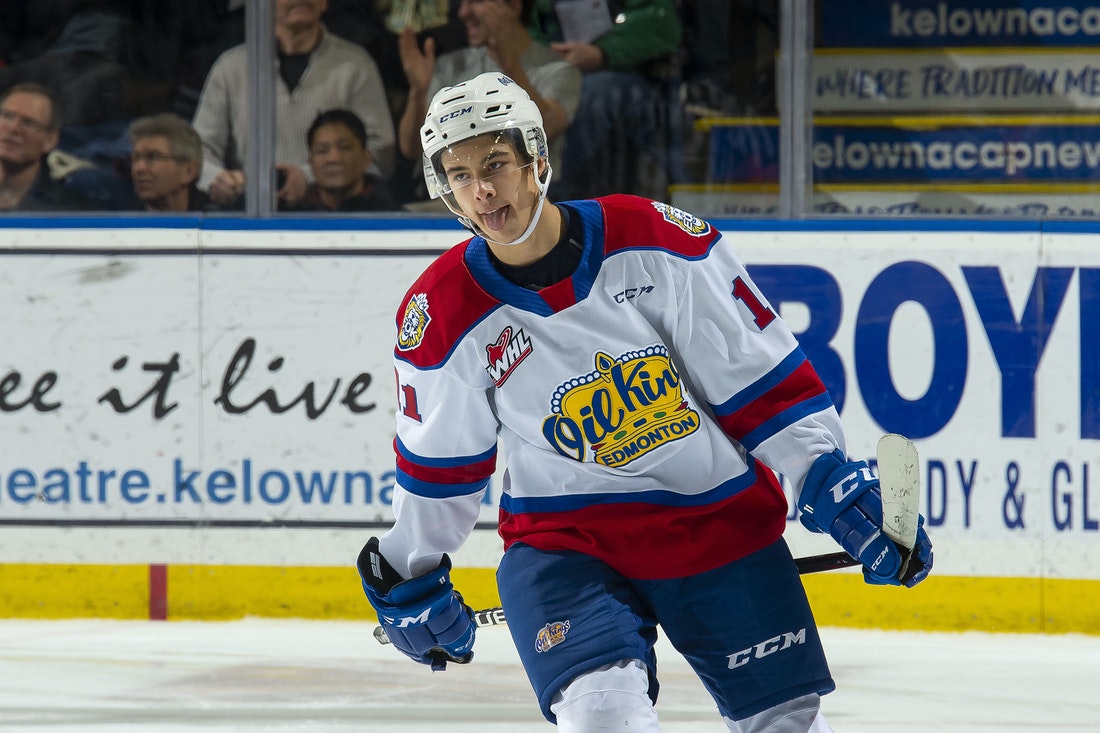
16. Dylan Guenther’s future
Dylan Guenther only had a cup of coffee at the World Junior Championship before the event was canceled due to COVID concerns. He didn’t play much in the first game, but he logged more than 16 minutes in the second game and had two assists.
After a slow start (discussed here), Guenther has 32 points (16 goals) in 25 games for the Edmonton Oil Kings of the WHL. He appears to be on track for an excellent third season with the Oil Kings, which raises the question: What will the Coyotes do with him next season when the on-ice product in Arizona will look a lot like the 2021-22 on-ice product?
“The plan is never to put a really good young player in a bad situation,” Armstrong said. “We don’t want to do that with any of our young players and we’re probably going to draft more players in the next four years than any other NHL team.
“We want to make sure that we nurture our young players and we put them in good situations so that decision will have to come through evaluation. You’ll see the growth in the player when they come back and they go through development camp and rookie camp and then when they get into playing games. They’ll tell us at the end of the day whether they’re ready.”
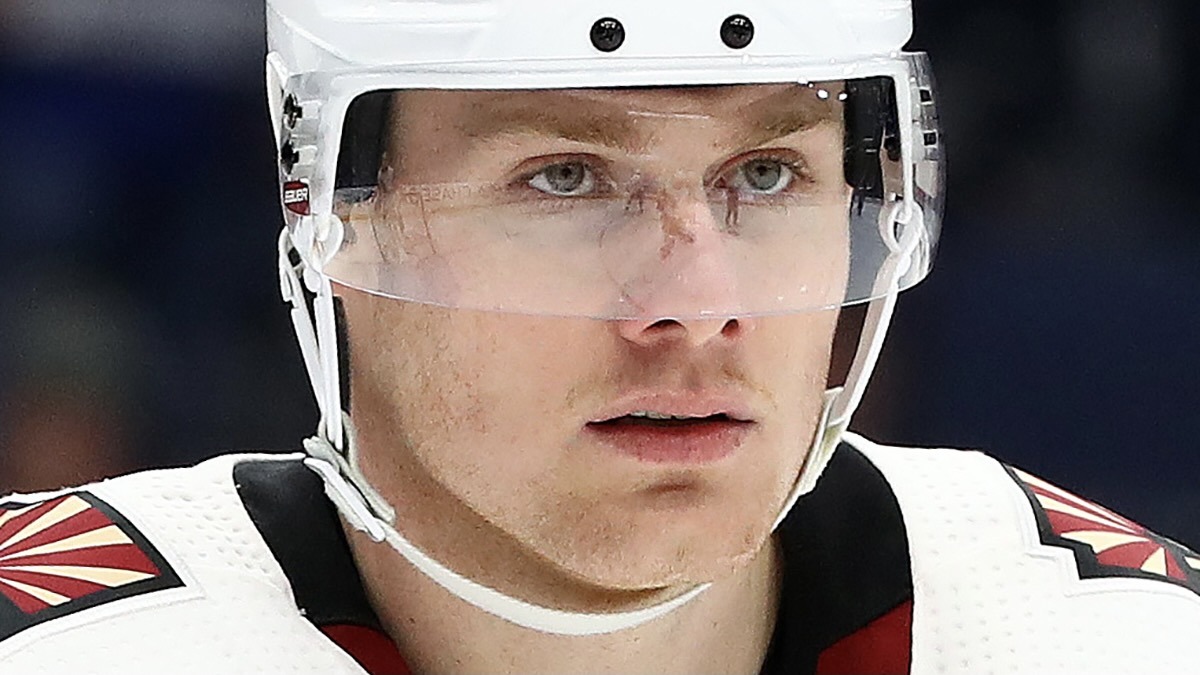
17. Free agency
Per Cap Friendly, the Coyotes have 20 players under contract for next season between the NHL and AHL. The league limit is 50. There are lots of holes to fill.
A few of those holes could be filled by young prospects signing entry-level deals. A few could be filled by acquiring the contracts of players that other teams need to move, just as the Coyotes did when acquiring Andrew Ladd, Anton Strålman, Loui Eriksson, Antoine Roussel, Jay Beagle and Shayne Gostisbehere last summer. A few more holes could be filled by re-signing existing restricted free agents or unrestricted free agents, but the Coyotes have a lot of work to do to field full NHL and AHL rosters.
A lot of that work will have to be done in free agency and let’s be blunt, Arizona will not be an attractive destination for free agents of any ilk. You can forget about top-tier free agents coming here and you can probably forget about mid-tier free agents coming here. That’s OK, given the Coyotes’ rebuilding plan, but it will be another active and arduous summer for Armstrong and his staff.

18. More relocation rumors
Maybe they’re just bored. Maybe they’re just misinformed. Maybe they have a genuine dislike of the franchise and its fan base because of all of the former’s foibles, but you can bet that if the Tempe deal hits any snags, or if the Coyotes don’t sort out their interim arena solution soon, there will be more relocation rumors.
At various points over the past 12 years, credible media outlets have suggested that the Coyotes were moving to Hamilton, Portland (the only one that almost happened), Winnipeg, Quebec, Kansas City, Las Vegas, Seattle and Houston (I probably missed some lesser reports). They’ve been wrong every time, but they will keep at it because they apparently know the league’s business in all of its financial detail better than the league itself.
Look, if the Tempe deal falls through, I’ll have my own questions about the Coyotes’ future in Arizona, but I am stuck on this quote from well connected Hall-of-Famer and former Tampa Bay Lightning executive Phil Esposito.
“The Coyotes need to get going on something because (commissioner Gary) Bettman doesn’t want them to leave and neither does ownership; all of the owners,” Esposito said. “I think the Phoenix area is a hell of a market. They just put the fucking building in the wrong spot.”
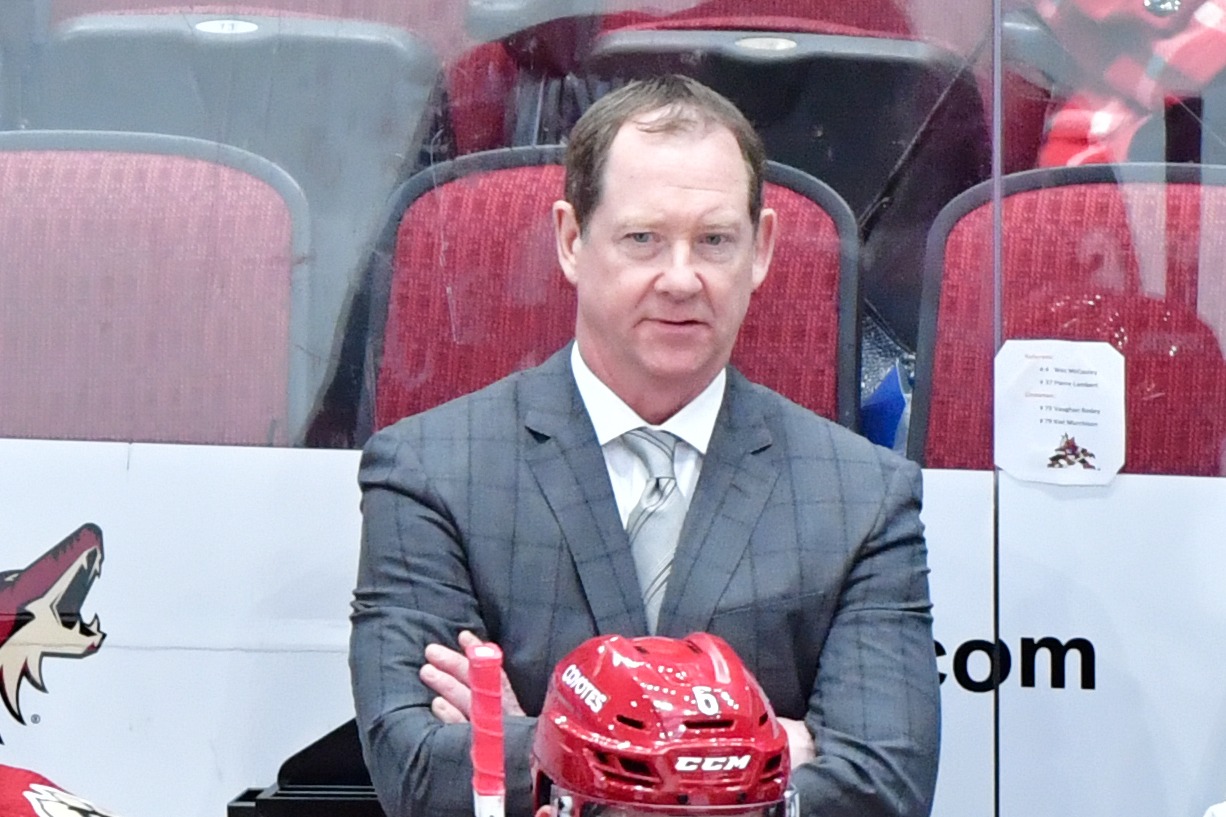
19. Coaching carousel
The Coyotes coaching staff underwent significant changes last offseason when André Tourigny replaced Rick Tocchet and Mario Duhamel joined the staff. That staff could see more changes with assistant coach Phil Housley and goalie coach Corey Schwab both working on expiring contracts.
Tourigny did not have a lot of say on his staff in his first season as an NHL head coach. Armstrong wanted to make sure that he was surrounded with some experience so he re-hired Schwab and kept Housley, who was one of the NHL’s higher paid assistants with one year remaining on his deal. We’ll see if Tourigny gets more control this summer, while still making certain that the Coyotes have some experienced hands to guide the glut of young players who will populate this franchise. Tourigny may decide that he likes his staff as is.

20. A game in Mexico
The Coyotes want it. The league wants it. It makes so much sense if the league wants to grow the game in a largely untapped market, and it makes so much sense to include the Coyotes. Alex Meruelo is the first Latino majority owner in NHL history, and Xavier Gutierrez is the first Latino president and CEO in NHL history.
Make this happen.
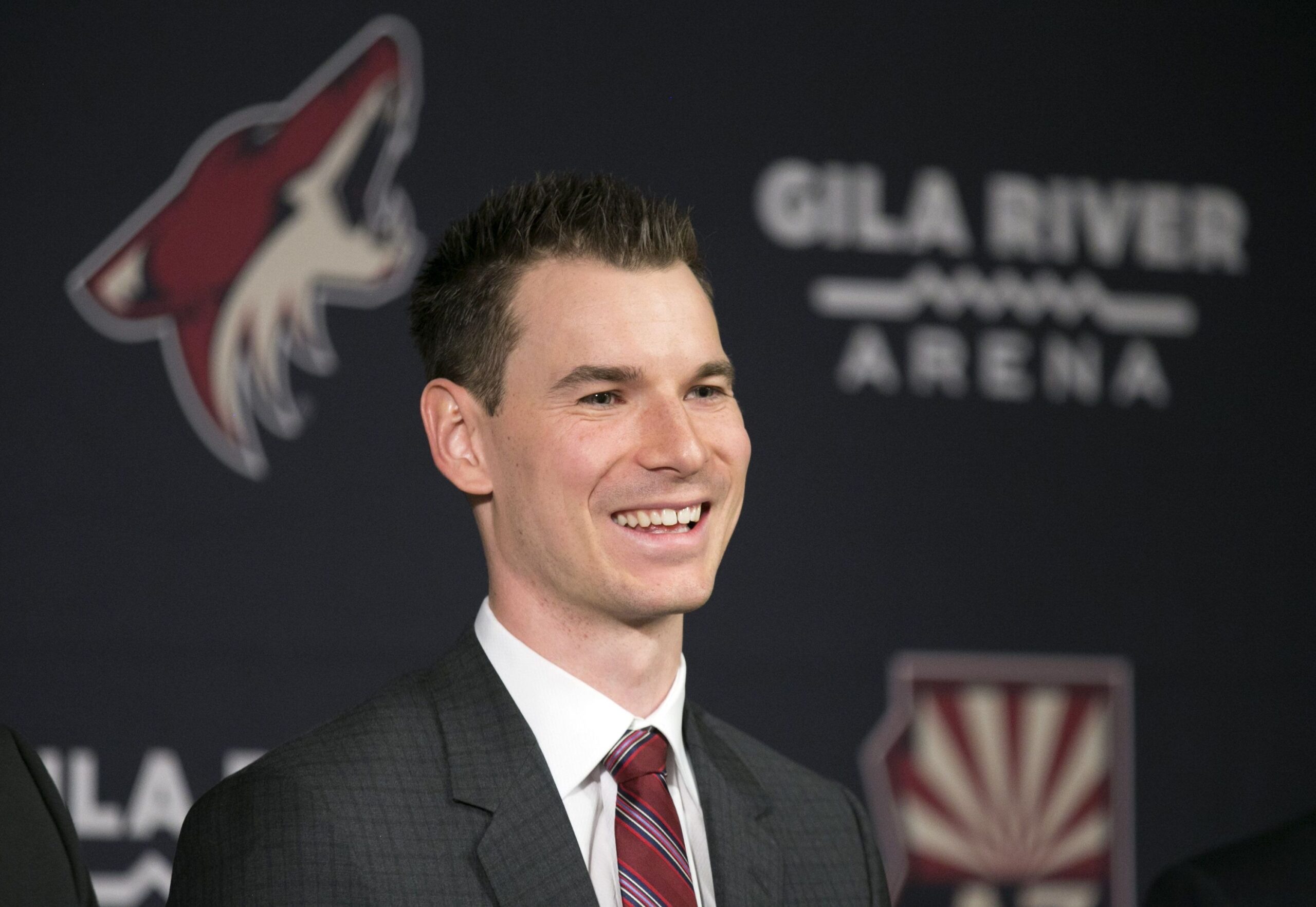
21. A second chance for John Chayka?
Back in January, the NHL suspended former Coyotes GM John Chayka through Dec. 31 in its ruling on a dispute over his departure from the team the previous summer. In a memo sent to teams, the league said that “Chayka engaged in conduct detrimental to the league, breached his obligation to the club, and was properly terminated by the club” after exploring an opportunity with another NHL team, which ESPN reported was the New Jersey Devils.
It is unclear whether Chayka will have another opportunity in the NHL when his suspension is lifted. His reputation took a big hit over the past few years through a combination of big contracts that he gave to players such as Oliver Ekman-Larsson, Clayton Keller and Nick Schmaltz; the team’s violation of the league’s rules for testing combine-eligible players; and the pursuit of a job with another team.
Chayka still lives in the Valley.
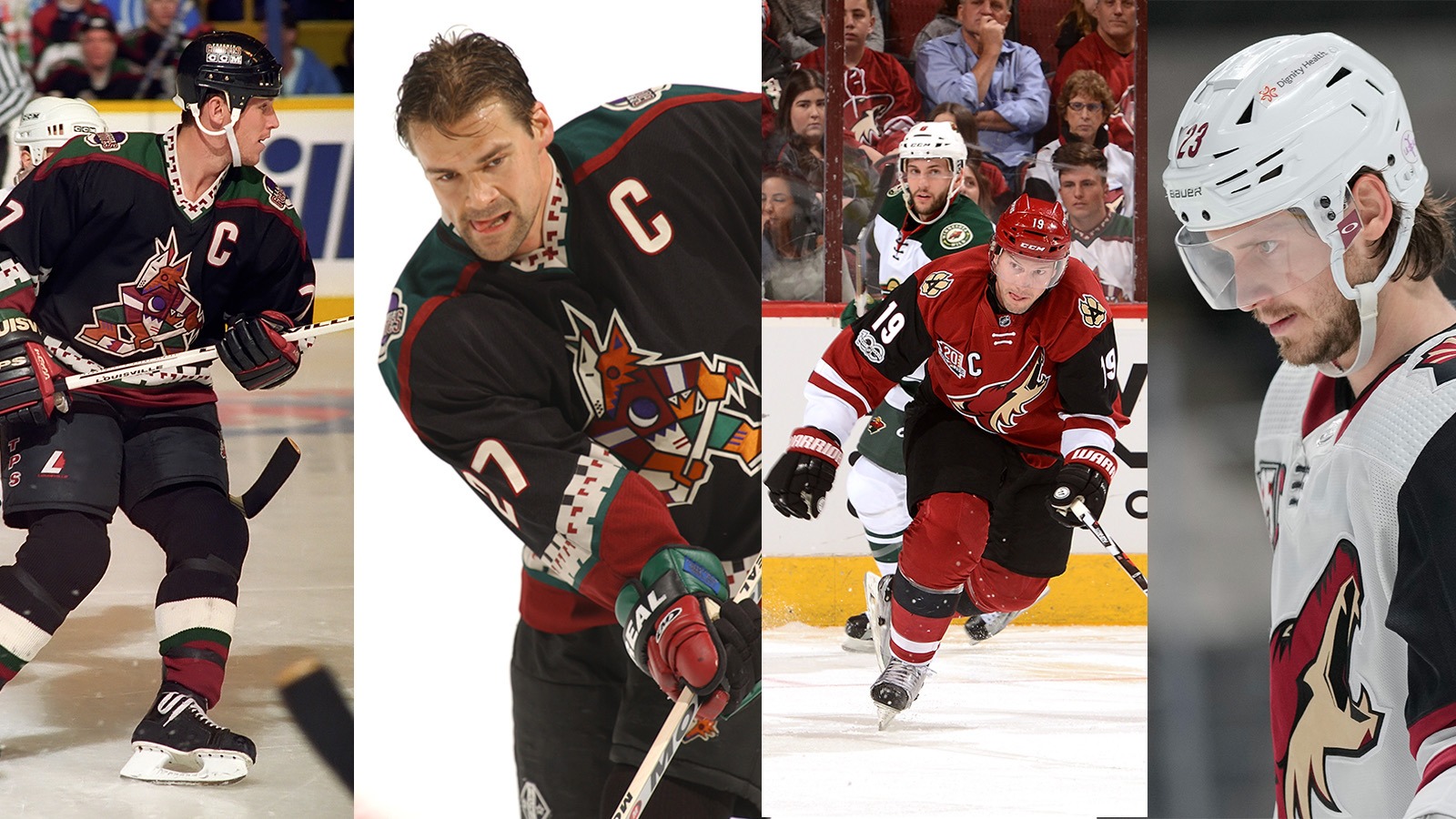
22. Will Coyotes name a captain?
This is only the second season in which the Coyotes have not had a full-time captain. Rick Tocchet’s first season as coach (2017-18) was the other.
When André Tourigny became the eighth coach in franchise history, he espoused a belief in group leadership rather than a singular voice. He also believes that the captaincy should happen organically and unanimously, rather than be forced, as may have been the case with Oliver Ekman-Larsson.
It’s hard to envision the Coyotes naming a full-time captain this season when the roster is still in a state of flux, but if any of the middle core returns, perhaps that choice could come from the likes of Jakob Chychrun, Lawson Crouse, Christian Fischer or Clayton Keller.
Follow Craig Morgan on Twitter
Comments
Share your thoughts
Join the conversation



